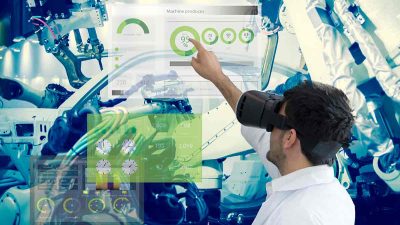Remember when augmented reality was just about placing digital furniture in your living room or catching virtual creatures in the park? Those days are rapidly fading into tech history. Today’s most innovative brands are deploying AR systems that don’t just overlay digital content onto the physical world—they actively read and respond to how you feel about what you’re seeing.
This evolution marks a fundamental shift in how brands connect with consumers. Traditional marketing has always aimed to evoke emotion. Now, with biometric AR, brands can actually detect those emotions and adapt in real-time.
How Emotion Detection Works in AR
Modern emotion-tracking AR combines several technologies to create a comprehensive emotional profile of users during their experiences.
Facial expression analysis uses computer vision algorithms to detect micro-expressions—those subtle movements in your face that reveal your true feelings, often before you’re even conscious of them. These systems can distinguish between genuine smiles and polite ones, between confusion and concentration.
Eye tracking technology measures pupil dilation, focus points, and gaze patterns. When something truly captures your interest, your pupils dilate slightly. When something confuses you, your eyes move in characteristic patterns. All these subtle signals help the AR system understand your emotional state.
Some advanced systems integrate biometric feedback from wearable devices. Your heart rate, skin conductance, and even breathing patterns provide valuable emotional data that helps the AR experience understand you better.
Real-Time Personalization: The Game Changer
The true power of emotion-tracking AR isn’t just in data collection—it’s in the immediate response. When an AR experience detects disinterest, it can instantly pivot to more engaging content. When it senses confusion, it can offer additional information or simplify the current display.
A luxury car manufacturer recently implemented this technology in their showroom AR experience. When the system detects a customer’s excitement while viewing certain features, it automatically expands information about those elements. If it senses hesitation about pricing, it subtly emphasizes value propositions and financing options.
This responsive approach creates experiences that feel almost magically attuned to customers’ needs. It’s like having a conversation with someone who perfectly reads your subtle cues and responds appropriately—a level of interpersonal intelligence that traditional digital experiences simply can’t match.
The Conversion Impact
Early adopters of biometric AR are reporting remarkable results. A major cosmetics retailer implemented emotion-responsive AR for their virtual try-on experience and saw a 34% increase in conversion rates compared to their standard AR application.
What makes these systems so effective is their ability to identify emotional barriers to purchase and address them in the moment. When a customer feels uncertainty, the system can offer reassurance through testimonials or additional information. When excitement is detected, it can smoothly transition to purchase options while the positive emotion is at its peak.
Privacy Considerations and Ethical Implementation
The intimate nature of emotion tracking raises important privacy questions that brands must address thoughtfully. Trust is essential when asking consumers to share such personal data.
Leading brands in this space are implementing clear consent processes that explain exactly what emotional data is being collected and how it will be used. They’re also giving users granular control over which biometric measures they’re comfortable sharing.
Some companies are choosing to process all emotional data locally on the user’s device rather than transmitting it to servers. This approach reassures privacy-conscious consumers while still enabling the benefits of emotional responsiveness.
The Future: Beyond Basic Emotions
As this technology matures, we’re moving beyond the detection of basic emotional states like happiness or frustration toward understanding more complex emotional responses.
Researchers are developing systems that can identify emotional nuances like nostalgia, contemplation, or even the specific type of delight a person is experiencing. This emotional specificity will enable even more sophisticated personalization.
The most forward-thinking brands are already exploring how to use this technology to create emotional journeys—carefully crafted experiences that guide consumers through a sequence of emotional states designed to build deeper connections with products and services.
Getting Started with Emotion-Tracking AR
For marketers interested in exploring this technology, starting small is key. Consider implementing limited emotion-tracking features within existing AR experiences rather than building entirely new applications.
Focus on measuring one or two key emotional responses that are particularly relevant to your products. For example, a food brand might track expressions of delight, while a technical product might focus on detecting confusion or frustration.
Remember that transparency builds trust. Be upfront with consumers about the emotional data you’re collecting and how it improves their experience. When people understand the value exchange, they’re much more likely to participate.
The Emotional Intelligence Revolution
Biometric AR represents nothing less than the addition of emotional intelligence to digital marketing. Just as emotionally intelligent people create stronger connections in personal relationships, emotionally intelligent AR experiences create stronger bonds between brands and consumers.
The brands that master this technology won’t just be selling products—they’ll be creating experiences that genuinely understand and respond to human needs. In a world where consumers are increasingly overwhelmed by generic marketing messages, this level of personal understanding may be the most valuable offering of all.




